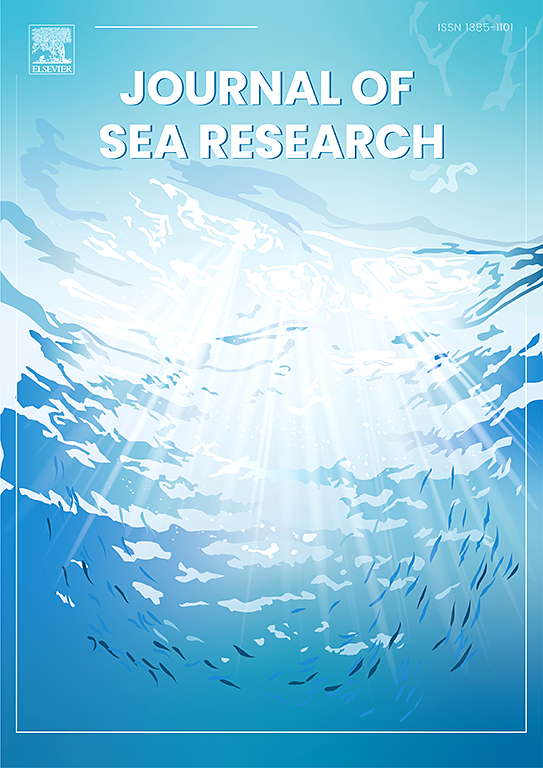Accelerated Ocean acidification (1985–2022) threatens tropical coral reefs and highlights biogeochemical refugia for marine conservation
IF 2.9
4区 地球科学
Q2 MARINE & FRESHWATER BIOLOGY
引用次数: 0
Abstract
Ocean acidification (OA) poses a growing threat to tropical coral reef ecosystems, yet the spatiotemporal dynamics of acidification and their implications for conservation remain undercharacterized. Here, we present a comprehensive global assessment of surface ocean carbonate chemistry from 1985 to 2022, using an observation-constrained, neural-network–based CMEMS dataset. We quantify long-term trends, detect structural accelerations, and identify regions of extreme and stable carbonate conditions based on pH, aragonite saturation (Ωₐᵣ), and calcite saturation (Ωca). Piecewise regression analysis reveals significant accelerations in the decline of all three parameters, with breakpoints in the late 1990s (Ωₐᵣ, Ωca) and post-2009 (pH). Spatial trend and Z-score analyses (Z ≤ −2.0) indicate that the Coral Triangle and adjacent Indo-Pacific regions have experienced the most intense acidification exposure, both in trend magnitude and extreme event frequency. Concurrently, we identify chemically stable zones, defined by Ωₐᵣ ≥ 3.0 and Ωca ≥ 1.5, that persist in approximately 12 % of tropical ocean surface waters from 2015 to 2022. Critically, these stable zones show substantial overlap with major coral reef provinces, yet protection gaps remain. In Indonesia, the Philippines, and Papua New Guinea, less than 35 % of coral reef area falls within marine protected areas (MPAs), despite high stable zone prevalence. Our findings highlight an urgent opportunity to integrate carbonate chemistry stability into marine spatial planning. Designating MPAs within these refugial zones offers a climate-informed strategy to sustain coral ecosystem resilience under intensifying anthropogenic CO₂ forcing.
加速的海洋酸化(1985-2022)威胁着热带珊瑚礁,突出了海洋保护的生物地球化学避难所
海洋酸化对热带珊瑚礁生态系统的威胁日益严重,但海洋酸化的时空动态及其对保护的影响尚不清楚。在这里,我们使用基于神经网络的观测约束CMEMS数据集,对1985年至2022年的全球表面海洋碳酸盐化学进行了全面评估。我们量化了长期趋势,检测了结构加速度,并根据pH值、文石饱和度(Ωᵣ)和方解石饱和度(Ωca)确定了极端和稳定的碳酸盐条件区域。分段回归分析显示,所有三个参数的下降都有显著的加速,断点在20世纪90年代末(Ωᵣ,Ωca)和2009年后(pH)。空间趋势和Z得分分析(Z≤- 2.0)表明,珊瑚三角和邻近的印度洋-太平洋地区在趋势强度和极端事件频率上都经历了最强烈的酸化暴露。同时,我们确定了化学稳定区,由Ωᵣ≥3.0和Ωca≥1.5定义,从2015年到2022年,在大约12%的热带海洋表层水中持续存在。至关重要的是,这些稳定地带与主要的珊瑚礁省份有很大的重叠,但保护差距仍然存在。在印度尼西亚、菲律宾和巴布亚新几内亚,不到35%的珊瑚礁面积属于海洋保护区(MPAs),尽管稳定区发生率很高。我们的发现强调了将碳酸盐化学稳定性整合到海洋空间规划中的迫切机会。在这些保护区内指定海洋保护区提供了一种气候知情的策略,可以在人为二氧化碳强迫加剧的情况下维持珊瑚生态系统的恢复能力。
本文章由计算机程序翻译,如有差异,请以英文原文为准。
求助全文
约1分钟内获得全文
求助全文
来源期刊

Journal of Sea Research
地学-海洋学
CiteScore
3.20
自引率
5.00%
发文量
86
审稿时长
6-12 weeks
期刊介绍:
The Journal of Sea Research is an international and multidisciplinary periodical on marine research, with an emphasis on the functioning of marine ecosystems in coastal and shelf seas, including intertidal, estuarine and brackish environments. As several subdisciplines add to this aim, manuscripts are welcome from the fields of marine biology, marine chemistry, marine sedimentology and physical oceanography, provided they add to the understanding of ecosystem processes.
 求助内容:
求助内容: 应助结果提醒方式:
应助结果提醒方式:


